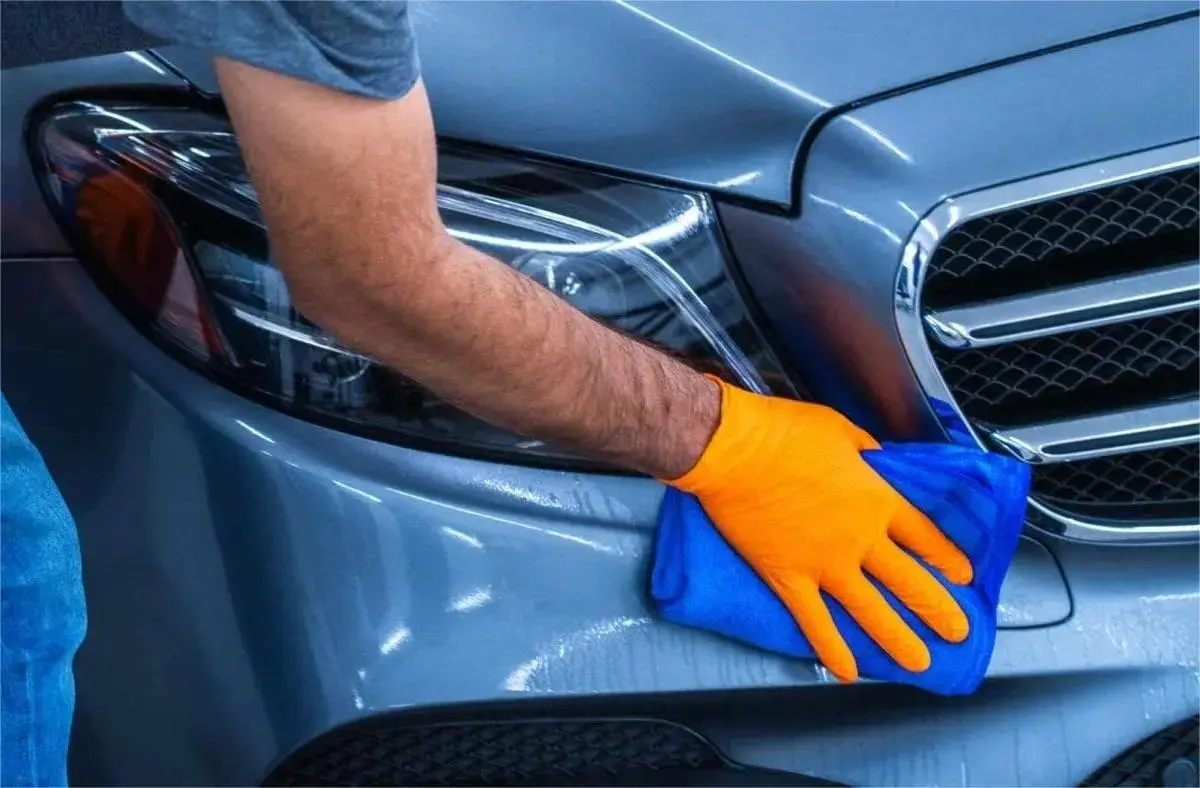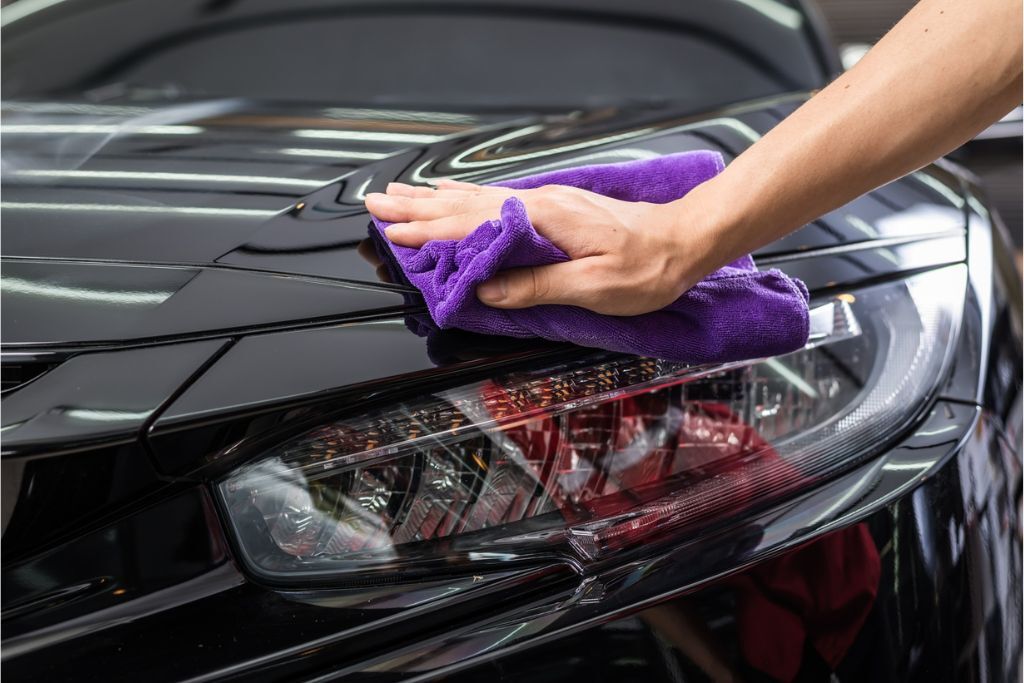What is Paint Correction? A Guide to Restoring Your Car's Finish
Even the most well-maintained vehicle will eventually succumb to the unavoidable effects of driving. Oxidation, fading, swirl marks, and scratches might affect even the most vivid car paint jobs. Car paint correction is the secret to bringing back the sheen to the once-glistening exterior of your vehicle.
What is Paint Correction?
Paint correction, also known as automotive paint correction, is a rigorous technique used to remove imperfections from the clear coat of your vehicle. These defects may include light scratches, swirl marks, etching, water spots, oxidation, and haze, and are eliminated to expose the brilliant color and deep shine that is concealed beneath them.
Expert detailers use special equipment, substances, and methods to carefully smooth the top microscopic layer of the clear coat, where these flaws are embedded. Swirls, tiny scratches (less than 1 mm deep), and other imperfections are successfully removed by this controlled abrasion, returning the paint to its original, showroom-like state.
Car paint correction works wonders for removing flaws in the clear coat, but it is unable to remove deeper scratches that go through to the base paint layer. Nevertheless, it can considerably improve the appearance of paint that has been severely scraped or the result of weathering.
Why is Paint Correction Required?
Identifying the causes of the damage is important for understanding why your car's finish needs paint correction.
- Swirl Marks: Airborne debris, abrasive drying products, using brushes at car washes, and poor washing techniques are major causes of these circular micro-scratches.
- Surface Scratches: Fine scratches that pierce the clear coat can be caused by issues like wind-blown grit, using the wrong washing procedures, and the everyday wear and tear of driving.
- Water Spots: The paint may get ugly white spots due to mineral deposits left over from evaporating water.
- Oxidation: When exposed to the sun for an extended period, the clear coat is oxidized, which results in the loss of gloss, yellowing, and fading of the coat.
- Etching: Environmental pollutants such as tree sap, acid rain, and bird droppings, can etch the transparent coat by chemically attacking it.
Even while these problems can be reduced with regular car maintenance, a certain amount of wear and tear is inevitable. To undo this damage and bring back your vehicle's original appeal, car detailing paint correction is the answer.
Car Paint Layers: A Detailed Overview
Understanding the components of automotive paint will help you fully understand the benefits of paint correction:
Primer:
The foundation layer prevents rust and offers a consistent surface on which paint can be applied.
Base Coat:
The color-determining layer of the automobile. Modern base coatings are often extremely thin.
Clear Coat:
The transparent protective coating that adds shine and depth is called the clear coat. This is the layer that gets damaged the most.
The clear coat is the sole primary focus of the paint correction process. This method preserves the car's original color by working on just the damaged top layer, leaving the base coat untouched.
The Paint Correction Method:
Expert auto detailing paint correction is a thorough, multi-step procedure customized to your car's paint condition:
Washing:
Before beginning the paint correction procedure, a thorough wash is performed to get rid of any pollutants and grime on the surface.
Clay Bar Treatment:
A clay bar is used to remove bonded impurities that washing alone is unable to remove. These contaminants include industrial fallout, rail dust, and tar.
Paint Inspection:
To determine the kind, extent, and severity of flaws, the paint is meticulously examined under bright lighting. A tailored paint correction plan is made with this information.
Masking:
During the correction process, adjacent panels, and trim items are masked to protect them from being accidentally damaged.
Paint Correction:
To level and eliminate flaws from the clear coat surface, specialized compounds are applied using a dual-action polisher.
Polishing:
To smooth the surface, get rid of haze, and bring back gloss, fine polishes are used.
Inspection:
A second inspection is conducted on the corrected paint to make sure that all problems have been fixed and to detect any spots that still need attention.
Protection:
To prevent further damage to the corrected paint, a protective layer consisting of wax, sealer, or ceramic coating is applied.
Although this outline offers a broad perspective, paint correction is a complex procedure requiring a great deal of knowledge and expertise.
Tools and Materials for Paint Correction
Specialized equipment and supplies are needed to produce outstanding results:
Dual-Action Polishers:
These machines have the power and control to remove imperfections from paint without damaging it.
Polishing Pads:
Foam and microfiber polishing pads are used in conjunction with compounds and polishes to bring forth the required degree of correction.
Polishes and Compounds:
These products have abrasives that restore gloss and clarity while removing flaws.
Paint Thickness Gauges:
The clear coat thickness is measured by paint thickness gauges to prevent the removal of an excessive amount of material.
Inspection Lights:
High-intensity lights are required to spot issues and assess progress.
To get the best possible results, professional detailers invest in high-quality equipment.
DIY Paint Correction: A Cautious Approach

It is feasible to do basic paint correction on your own with the right tools and methods, but exercise caution.
- Start small: Before you attempt to correct the entire car, start with a small area to gain experience.
- Use a Dual-Action Polisher: It is hard to handle orbital buffers, as they make damage more likely.
- Reduce Pressure: Reduce pressure and let the polisher and products do their job. You can damage the clear coat by applying too much pressure.
- Follow the Product Guidelines: Follow the advised application timings and methods.
- Replace Pads Frequently: Worn pads might not be effective and make scratches more likely.
- Inspect Regularly: Monitor your progress and make sure to pause to examine the surface frequently.
- Consider Professional Protection: The application of ceramic coating will safeguard your freshly corrected paint.
DIY paint correction is difficult and time-consuming, even with proper care. However, professionals should be hired for the job to get the best results and avoid damage.
Paint Correction vs Full Paint Job: Making the Right Choice
Car paint correction is a great way to fix scratches or faded paint without having to repaint the vehicle. Having said that, it does have limitations. Severe oxidation, deeply etched scratches that reach the base coat, and severely cracked or peeling clear coats may call for more serious measures like bodywork and repainting.
Why Choose DG Detailz for Professional Paint Correction?
Achieving paint perfection is our passion at DG Detailz. Our competent staff has the tools and experience necessary to produce outstanding results. We provide tailored paint correction solutions to meet the unique requirements of your vehicle and bring back its showroom luster.
For a free consultation to discuss the state of your automobile and to learn more about our paint correction options, get in touch with us right now. Hire us and rediscover your car's beauty once more.



.jpeg)
.webp)


